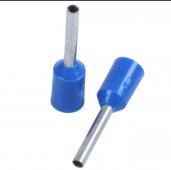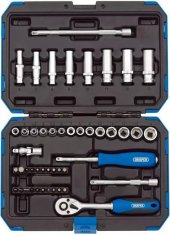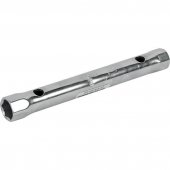YOU need something to lock.
Anywhere you have a nut you need to use loctite or at least nylock nuts, IMO, at least in your frame. As things expand and (more importantly) contract, your nuts will loosen and move slightly.
For your battery connections you should use lock washers with your nuts.
My small DIY battery has 4 cells in a wooden frame. Even if the batteries don't expand and contract, the wood will as the humidity level changes between summer and winter. Every door in my 125 year old house swells slightly in the summer (and sticks) and then shrinks slightly in the winter (and works again). Add in battery contraction as you deplete them and things will come loose. My compression frame has nylock "lock" nuts on the outside so that it will never expand, and if the frame contracts due to humidity, temperature, or battery contraction it will eventually go back to the originally designed size, no larger.

So you are telling me that your casing will shrink, making too high compression, as it's wood, moves with nature and was built in the winter, as it doesn't go larger? :+)
(Joking)
Eventually....
Sure.
A nut not locked can go lose.
In a few weeks? I don't know.
I did not mark the nuts position on the threaded rods.
Perhaps it got less tight,
NOT due defeating cells (they where already bloated) but due nuts automatically twisting??
I guess earth vibes are different in your country then they are in Europe and Asia.
Here, a hand tight but does not move at all out of its own.
As stated many times, and once again, cells does not get bigger!
They will try to expand in the center.
With health cells as start, the upper and lower aluminium square sheet is the minimum size you can clamp down. (Almost 72mm for 280Ah Eve cells
If you want more, you crush

And with "empty" cells the walls are "hollow" bending inward. )(
Now I know in your country nature works differently.
Here, when something is hollow, compression on the edges will not increase the compression on the center.
It's an open space.
When the cell expands due charge, the walls go flat | and perhaps try to bulge.
As they are nice tight together, they can't.
All the springs in the world is not going to change this.
All the tighting nuts aren't going to change this.
What does happen is that in the center the cell will try to bulge.
With 15mm plywood, it can, a little.
Thick iron beam probably not.
We aren't talking about extremely high pressure.
Movement is minimal.
You can easily try by dis-charging all your cells and place them in a row (kissing in the long side)
> |||||||||||| <
And place a marker on the bottom at each side.
Now charge them till 95-100% make a new mark, with different colours.
Remove the row of cells and see if and how much they move.....
I doubt you are willing to try, I did.
With my 280Ah Eve, 16 cells.
Smooth floor base (plastic)
It didn't move one mm.
Nothing at all.
Healthy cells..
They expand and contract, thenth of mm, hardly noticeable.
And, they can, as the are hollow )( .
Going flat || gives no extra pressure.
Only when they start to bulge () they will give pressure.
And only on that time a box will provide counter pressure.
Healthy cell doesn't bulge...
So you need to stop a problem from getting worse, there is a problem at the start needed to give tention.
Probably not it in your country.
Must be different air pressure...
Cells here arrive )( and go ||.
In your country probably arrive || and go ()
A bit like my 152Ah cells who arrived || and some already slightly ()
After a few shallow cycles the where all slightly ()
What got worse over time.
Where as my 280Ah arrived )( ,
most of them, who didn't get visual damaged in the fire, still are )( and are fully charged.
Must be the air pressure.
The cells are here )( hollow, bend inward due slight vacuum in the cell.
If the air pressure in your country is much lower, it make sense that they are no longer )( but || on arrival.
Why nuts automatically turn in your country?
Beats me.
Most locations where there is no vibration, no high temperature changes, and some slight pressure, nuts stay like that for ages.
sure...
in time, due vibration by handing the things, they will turn.
not in days or weeks with absolutely no movement.
I'm going over in my head all the things that have hand tight nuts.
I really do want to believe you, just that my day to day experience is absolutely not the same as yours!!
like my drill.
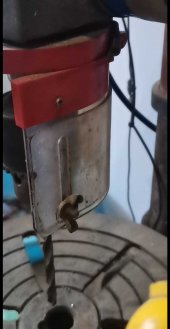
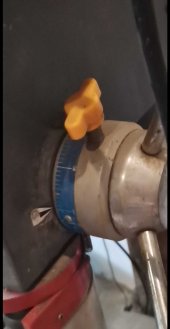
Two winged nuts/bolts hand tight.
I can make it really tight and it never needs adjusting.
When I do need to make adjustments, that's not so easy.
Especially if in the years there is dust/rust and such.
My +45 years experience with tools.
So, hand tight is enough.
It will keep the cap in place.
After many many hours iof usage, it does need to be re-tighten again.
I'm sure we can agree a drill will have a lot more fibrations then a battery on concrete floor.
Both are M6.
The winged nut has 1 thread.
Normal nut 4 threads.
No oil, so standard iron to iron resistance is higher.
And it's not a loose nut on a thread, it's tightened.
Just not that much force

I can't take the nut between my fingers and unscrew.
To tight for this.
In my airconditioning controlled temperature room, cells have maximal 10c difference between high charge and discharge.
Extension of the 70cm iron rods is there. Naturally as iron stretches, and probably also a bit die temperature difference.
But not that extreme that it will make a loose nut.
Besides, I've always leaned to tighten a few times with "working" materials
Like aluminium wheels, you need to re-tighten after a week.
It "settles".
Wood also settles.
It must be a phenomenal only for your country that have screws untighten without fibrations and other external forces.
The expansion of the rod and cells won't do this in weeks.
If you talk about many years, yes, you are absolutely correct.
As per topic, I was able to tighten a few times the nuts due, in my idea, the de-bloating of the 152Ah cells.
Who where unhealthy to start with.
I didn't make markers, but it must have been visual, if the nuts would have untighten 3 turns!
Bloated cells are not a normal installation and situation.
Please do not compare standard good cause of action when building a pack, to the creativity needed with bloated cells.
As a start..
The normal space, 48mm wide, isn't sufficient. (152Ah cells are 48mm, 280Ah are almost 72mm)
Between 50-55mm, depending on the state of bloating..
And like a balloon is easy compressed a bit, so are bloated cells.
Just stack them 4 high is enough to slightly compress the lower cells.
(Who will bloat again when standing up, in a few charges)
For most contact a nut and washer are enough.
In harsh environment (vibration, high temperature changes, much force) a spring washer is needed.
For most electric contacts, one washer is good.
Additional (spring) washers isn't.
3.5-4 Mm torque is enough to have it locked.
Standard Spring washers will loose it's strength over time.
Normally not a problem, you will tighten it much higher then 4Nm.
Don't try this on your cells...
Or start reading my thread repair tread

For electric..
It's not the best solution.
There are hard metal spring washers who keep their strength.
What's more important..
The continued active compression, or galvanic corrosion?
I know I'm the only one who ever had a car accu probelms looking like this:

And in my few years in Thailand I haven't seen it yet.
Netherlands...
Sadly quite a few times.
Working at a garage might have something to do with that..

Perhaps irrational fear for this.
Or you fear for magically unscrewed nuts.
Or both

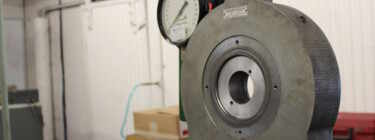
www.portlandbolt.com





